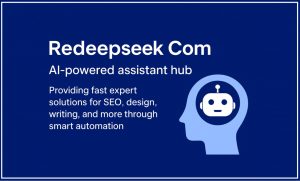How To Implement Your Marketing Content Strategy?

Content Strategy Where To Start?
What is content marketing?
Content marketing is a high added value content creation strategy aimed at disseminating your expertise on all of your communication channels (Website, Newsletter, social networks, prospecting e-mail, etc.).
This strategy is now extremely effective, particularly in B to B, it adapts perfectly to changes in customer behavior and allows the creation of a strong and differentiating brand image.
Content can take many forms and each of these forms has advantages and disadvantages to consider. The most popular formats are:
- Blog post
- Video
- White Book
- Podcast
Of course these are only the main ones there are many variations and the only limit is your imagination.
If you want more examples and a more detailed definition of content marketing
Content marketing in 3 statistics
Why are companies that have deployed a real content strategy succeeding better than others?
37 %
Of executives purchased a product or service after discovering content. 2/3 did not know the company before discovering this content.
57 %
Of the purchasing decision is made even before contacting a potential supplier
3 x
Content marketing generates three times more leads than paid search engine advertising.
So the question is not whether having a content strategy is relevant or not, but rather how to put it in place.
The importance of setting clear goals

Best Marketing Content Strategy 2021
A content marketing strategy takes time and involves all functions of the business. You will be tackling many areas of digital marketing and if you don’t want to get lost it is important to set clear goals.
A good practice is to set three key performance indicators as a first step. Why three? In the digital world, how to start a Wikipedia page for someone you can have hundreds of indicators and depending on the maturity of your strategy they are not always relevant.
Pick three to get started. Then define SMART goals to achieve: Simple, measurable, achievable, realistic and time-bound.
This is important because a content strategy is a medium-term project and without indicators to follow you could get discouraged. To help you we show you at the end of the article, screenshots in support of our exact statistics obtained after about thirty articles in 7 months.
You’ll see, it’s mind-blowing.
Among the indicators you could follow:
- The positioning of your articles on search engines
- Your website traffic
- The number of reactions your content elicits on social networks
- The conversion rate
Be careful, calculating the conversion rate when you have just started is completely counterproductive and almost impossible to calculate. It’s a long-term strategy, take it step by step.

Step 1: The Editorial Strategy Of Your Content Marketing
The first step for an effective strategy is of course the editorial line. Making content to make content doesn’t make a lot of sense. You need to know who you are talking to, what you are going to talk to them with, and how you are going to do it.
Define your personas and their challenges
The more informed among you will not be surprised to see it, the first step is of course to have carried out an in-depth work on your personas and their issues.
You must identify who your targets are and detail as much as possible what characterizes them. Be careful, no shortcuts, your content strategy should address everyone involved in a purchasing process with your company. Not just to “Decision Makers”. In addition, you must really detail their operation, Wikipedia expertstheir problems, their information consumption habits or their centers of interest.
But it is also the occasion to detail in a very precise way their stakes. Think that in 2020 we are not looking for someone who sells us something, we are looking for someone who helps us overcome a problem.
Do not neglect this step: A good persona is not “A Parisian business manager who wants to grow his business and who today has between 20 and 50 employees”.
This is VERY insufficient.
Find our detailed guide to the buyer persona here

Choose The Types Of Content
Once your personas are defined, everything becomes much easier. Like the choice of the type of content. Indeed, you have an infinite number of possibilities at the start:
- Blog post
- White Book
- Video
- Podcast
- Infographics
- Web stories (you didn’t know that one 😆)
- Webinar
- Template to download
- Gif (Why not?)
- Simulator
- Mini-game (does gamification speak to you?)
- case study
- Customer testimonials
How to choose?
What type of content is your persona viewing? On what support? Once you have detailed your personas, it will seem obvious to you, or almost.
To begin with, I invite you to take a particular interest in:
Blog posts:
It is probably the easiest content to achieve at the start and it is a must to be better referenced on Google. Indeed, Google is an avid fan of textual content (easy to understand for him). Find our writing guide here.
The videos:
Content is king today. Videos improve conversion rate and visitor engagement. It is easy to consume and we can pass emotions through it more easily. Again we have a detailed guide for you here.
White papers:
It’s pretty close to a blog post but there is a fundamental difference. A white paper will not be referenced, it is “premium” content. His goal? Convert your traffic into lead, because to download it your visitors identify themselves using their e-mail. It is not just white papers as premium content, but this type of content is essential for marketing automation.
Find the topics of your content strategy
At this point you know who you are talking to and you know what you are going to talk to them with.
Now you need to figure out what to talk to them about. Once again, having the work done on your personas will save you precious time. The objective is to deal with the problems encountered by your target.
But it is not enough to say “my target has problem X, so I will explain to him how to deal with problem X”. For each issue of your target, start by detailing the related subjects. Then for each subject you do a keyword research.
Why?
If you produce content, it is to be read, and therefore to be found on Google. SEO is far too serious a business to leave it to chance. In addition, having a precise indication of the number of requests on a subject also allows you to validate that the subject is indeed important for your prospects.

Let’s take an example:
To simplify, I will say that the target of the company in this example is: B2B business sales managers who have a team of 2 to 3 sales people maximum. They operate in the SaaS software industry.
Insufficient description certainly, but allow me this simplification 🙂
You might have identified that a recurring topic for these sales managers is improving sales methods. Great! But let’s do a simple search with a free tool like Ubersuggest (internally we use the keyword magic tool from SEMrush instead).
“Sales method” is really very promising, low competition, relatively high volume, that’s great!
NOT SO QUICKLY
Let’s take a synonym: Sales technique
You see? When writing a blog post it takes time, so you need to maximize the ROI of that time. If you go too fast and neglect the keyword research you may be missing out on the keyword with the highest potential.
Formalize your editorial line
Getting started with a content strategy is going to take time, but when the results do happen you will want to take it further and strengthen it. Which means you’re going to write a lot of content and probably outsource some of it. Any writer should be aware of your editorial strategy, which is to say:
Your personas
Who is the content for, what are their issues, etc.
The subjects of your content
Obviousness itself, but giving a global vision is important (see the content plan below)
The tone of your content
Sustained and distant, humorous, business casual…
The variations that will be made of the content
Video, infographic or just broadcast networks planned
These elements will allow all stakeholders (internal or external) to move in the same direction. Also remember, when you delegate this task, to make sure for each content to add an SEO brief (keyword, length of the content, etc.).
Email *
A video every two weeks to share a marketing and sales secret with you. Short and efficient.
It intrigues me!
Step 2: Carry out your content plan
Why make a plan for your content strategy?
The most common mistake is to work on its content “on the fly”. You look for an idea and you write the content and then you don’t think about it until the next date you have to produce the content.
Why is this a mistake? Because by executing your content strategy this way you will be neglecting two fundamental points: The customer journey and SEO.
A global vision necessary to take into account the customer journey
Remember the goal of your content is to help your potential customers solve their simplest problems and gain maturity so that they end up using your services.
If you deal with topics “haphazardly” and without a big picture, it is unlikely, if not impossible, that you will deal with an entire journey effectively. Indeed, it is better to plan little content but on the whole route than a lot of content which would only be discovery content for example.
To simplify, we will say that there are 3 phases:

The discovery phase
Your prospect is not yet working on a solution to a problem, sometimes he has not yet identified it. He will be interested in general topics and trends in his sector or his profession.
The evaluation phase
Your prospect has identified a problem in his daily life that he must resolve. He looks for solutions to his problem and compares them with each other.
The decision phase
Your prospect has identified the best solutions to his problem, he knows how he is going to go about it and must decide with which partner he will do business with among those who offer the right solution.
For each step you will have content formats that are more suitable than others.
You must therefore cover the entire journey of one of your personas quickly with content at each stage to make it progress.
Be careful, it is not the subject that alone determines whether it is content for discovery, evaluation or decision. It depends on your product or service and your target. A comparison of marketing automation tools for SMEs is discovery content for us but will be decision content for a marketing automation solution publisher, for example.
Moreover, with an overview you will avoid repeating yourself too often in your articles. If you know that a detailed article on a topic is coming, no need to go into details in the article in writing, just insert a link to that article.

Perfect transition to talk to you about internal networking!
An overview to optimize your internal networking
Be careful, it’s getting technical! 😅
Internal networking, as some of you know, is extremely important for natural referencing as well as for your readers.
It makes it easier for your readers to navigate your site, without having to do additional research. If it is well done, it will also allow them to progress in their course by moving from one subject to another more advanced.
For Google it’s another story, I won’t go into details but remember that the more (relevant) internal links you have the more Google perceives your website as offering consistent and quality content to your readers. In addition, each time Google visits (we say “crawl”) you’re content, it will follow these links and therefore Google will see larger portions of your site on each of its visits. All this will promote your natural referencing.
Your Topics | Multiple Stories – Share Ideas at AikDesign Write For Us



